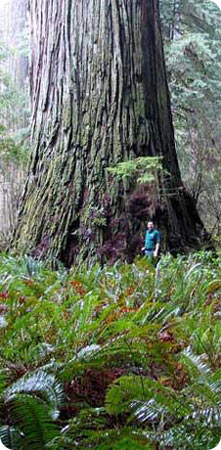181110-redwoods.jpg

Redwoods can grow as tall as a 30-story building. Credit: Mario D. Vaden - www.mdvaden.com
Two of the best-known symbols of Northern California are fog and the giant redwood tree. During summer, in fact, they’re often seen together. But a recent study suggests that their relationship isn’t as close as it used to be.
Redwoods inhabit a narrow strip along California’s Pacific Coast, from near the Oregon border to south of San Francisco. They can grow as tall as a 30-story building, and live for centuries.
During winter, the redwood forests receive copious amounts of rainfall. But summers typically are pretty dry. The trees survive in part because of fog -- low-level clouds that form from Pacific moisture that’s pushed ashore by winds. The fog condenses in the upper reaches of the trees and drips to the ground, providing water for the redwoods and other forest growth. That’s important to the redwoods because they can “exhale” up to 500 gallons of water a day.
But a recent study found that fog was much more common in the early 20th century -- it engulfed the redwood forests more than half the time, versus a little less than half the time today.
The change most likely has been driven by warmer waters along the California coast. The study found that coastal fog is more common when the water is cooler. When the water is warmer, more of the moist air from the Pacific passes over the coastal mountains that host the redwood forests. That makes the coast warmer and drier, with less fog to shroud the giant trees -- exposing them to the heat of the long, dry summer.

